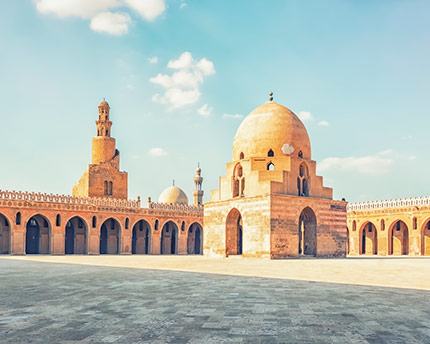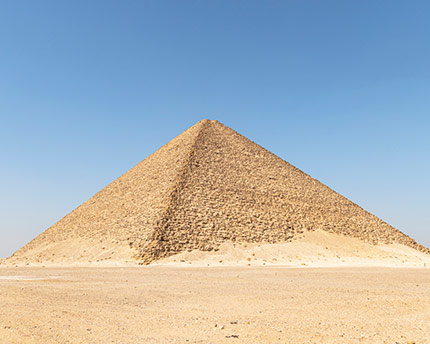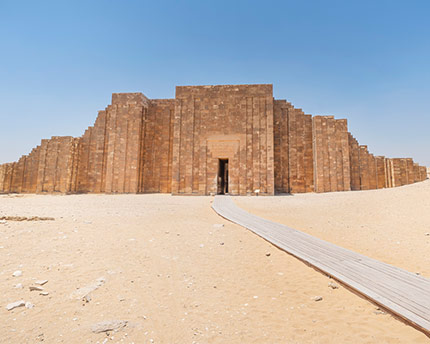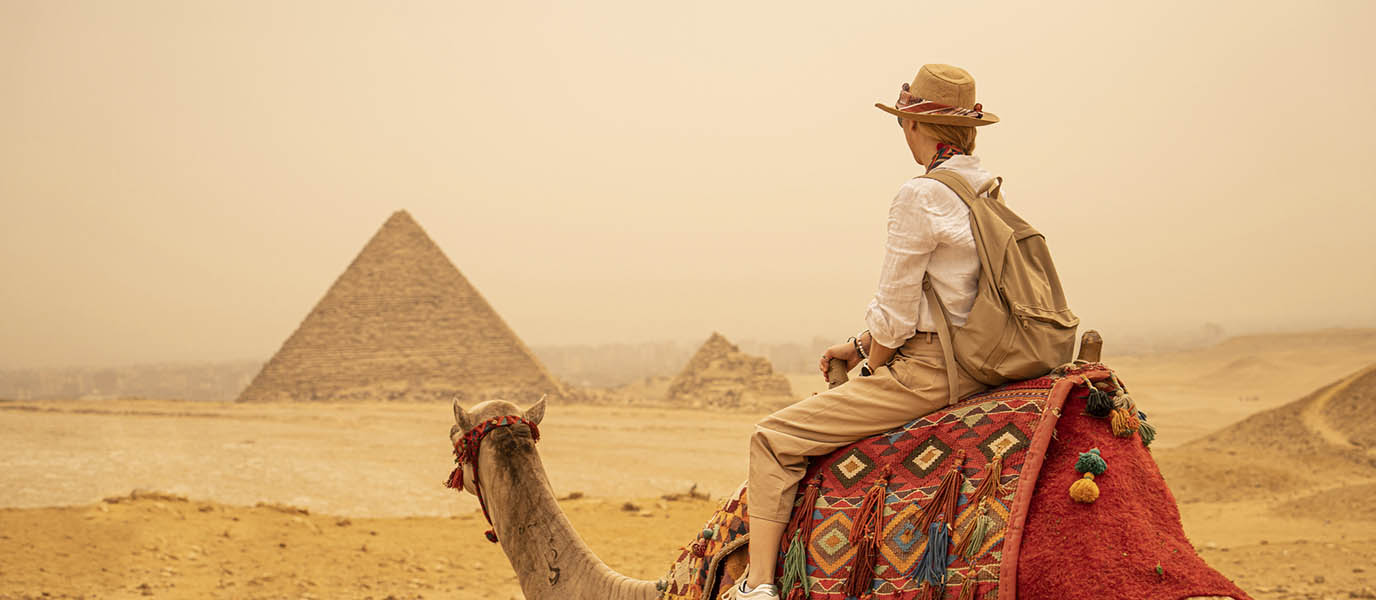Commissioned by the Abbasid governor of Egypt, Ahmad Ibn Tulun, in the second half of the 9th century, the imposing Ibn Tulun Mosque is one of the oldest and best preserved Islamic jewels in Cairo and thus anywhere in Africa. Not only is it the oldest mosque in the city, boasting original architectural and decorative features, but it is also the largest (spanning 26,300 m2). Said characteristics led to it becoming a UNESCO World Heritage Site, along with other monuments in the famous Historic Cairo. It is a real must-visit during your time in the Egyptian capital.
Located on the small hill of Gebel Yashkur in the Sayeda Zeinab neighbourhood —between the Citadel of Saladin and the banks of the Nile— the Ibn Tulun Mosque is one of the most iconic monuments in the heart of Islamic Cairo or Historic Cairo. Other memorable monuments include the Citadel itself, the remains of the ancient city of Fustat, the Amr and al-Azhar mosques, the Hanging Church, the Ben Ezra Synagogue and the necropolis known as the City of the Dead, as well as one of the most visited tourist attractions in the Egyptian capital. By strolling through its enormous porticoed courtyard and passing beneath its arcades, you will gain a better understanding of this key piece in the disjointed historical puzzle that makes up the Egyptian capital.
Origin of the Ibn Tulun Mosque
From the late 8th century onwards, the Abbasid caliphate became the leading power in the Middle East and North Africa, which including, of course, Egypt. In the year 868, Ahmad Ibn Tulun himself, then governor of the area, took advantage of the political upheavals in the heart of the Abbasid empire to establish an independent dynasty in Egypt: the Tulunids.
In this sense, the construction of a large mosque in the short-lived Tulunid capital city of Egypt, al-Qata’i —one of the historic centres of present-day Cairo, along with al-Askar and Fustat— was a clear sign of the independence that Ahmad Ibn Tulun himself sought to consolidate from the Abbasid caliphate. Thus, work on the colossal complex, which stood adjacent to Ibn Tulun’s own palace and was intended to serve as the city’s main congregational mosque, began in the year 876 and was completed in 879.
Designed in the classical style of Samarra (Iraq), characteristic of the Abbasid Empire, the complex looks more like a fortress, protected by its imposing wall which is crowned by beautiful battlements. However, the arches of the porticoes and the windows that open up onto the enormous central courtyard and the outside of the mosque feature intricate geometric, calligraphic and floral designs in stucco, indicating the sacred nature of the building. This is especially true for the eastern portico (known as the quibla, or Meccan direction), which consists of five ornately decorated naves. This contrasts with the other three porticoes, which have two naves each.
There is also a large ablutions fountain (sabil) in the centre of the courtyard —a later addition introduced by the Mamluk Sultan Al-Mansur Lajin in the late 13th century— which is crowned by a large dome supported by four arches.
In any case, the huge Ibn Tulun complex exudes a sense of harmony that is only found in places that have existed for hundreds of years; in this case, more than 11 centuries.
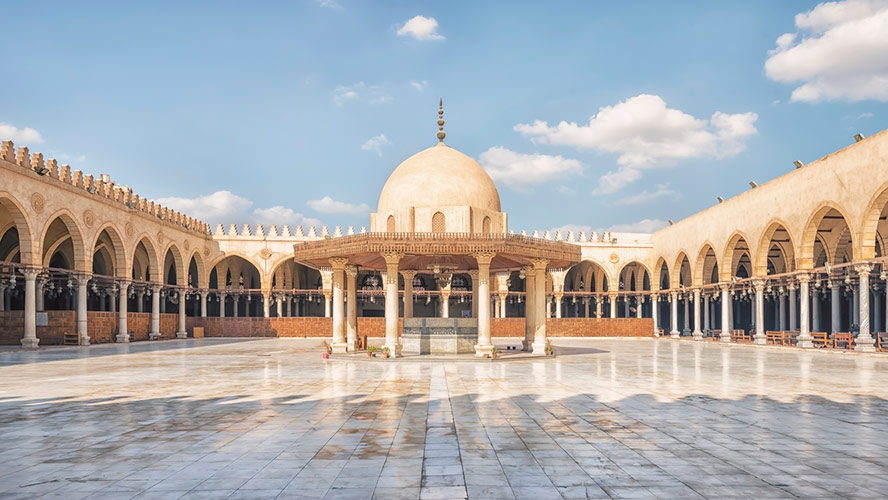
The Mihrab of the Ibn Tulun Mosque
The mosque contains six mihrabs (the niches indicating the quibla) from different historical periods (Tulunid, Fatimid and Mamluk); six of these are flat, while the main mihrab has a concave shape. The main mihrab is a true work of art, with an elaborate decoration dating back to the time of Sultan Lajin, including stucco decorations, fine woodwork, marble columns, glazed mosaics, etc. On the right-hand side, the minbar, or Islamic pulpit, is another key part of the complex.
Climbing the Ibn Tulun minaret
One of the most defining features of this grand mosque is its tall minaret. Despite significant debate, it appears that the sturdy minaret was added to the original structure in 1296, also on the orders of Sultan Lajin. Its most iconic feature is the helical external staircase (one-of-its-kind in Egypt) which leads to the top of the tower: a detail that is reminiscent of the design of the Abbasid mosques of Samarra.
Even more unique is the fact that you are allowed to climb to the top of the 50-metre-high minaret, where you are rewarded with a wonderful view of the mosque itself and the bustling city that surrounds it.
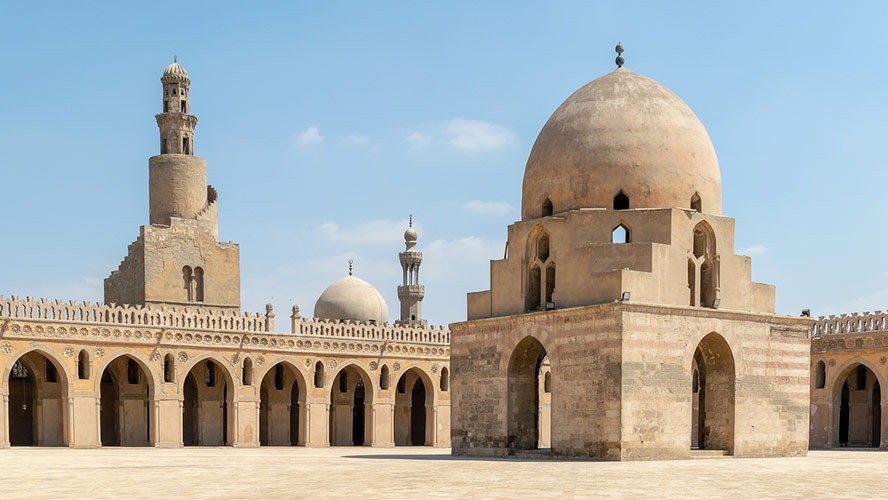
Where to eat close to the Ibn Tulun Mosque
The space around the mosque, particularly towards Sayeda Zeinab Square and Old Cairo in general, is a bustling area where you can find everything from traditional Egyptian cuisine to pizzerias, cafeterias and fast-food joints.
In addition, from the Ibn Tulun Mosque it is also possible to walk to the Nile Corniche, where you will find other options for a bite to eat. You could also head to the western bank, on the other side of the river, to discover and enjoy the gastronomic offer of the Barceló Cairo Pyramids hotel (https://www.barcelo.com/es-es/barcelo-cairo-pyramids/), where you will find a wide range of local and international dishes across its three restaurants, meaning there really is something for everyone.
Where to stay close to the Ibn Tulun Mosque
Standing on the central Al Haram Avenue, one of Cairo’s most important thoroughfares which connects the banks of the Nile to the Pyramids of Giza, the Barceló Cairo Pyramids hotel has 236 spacious and modern rooms and, in general, everything you need to enjoy a first-class stay in the Egyptian capital.
Its 3 restaurants and bars, spectacular heated outdoor pool, sophisticated spa and complete gymnasium —in addition to other in situ services— make this exceptional four-star hotel from the Barceló Hotel Group the perfect place to recharge your batteries after a long day of sightseeing in Cairo.




































































